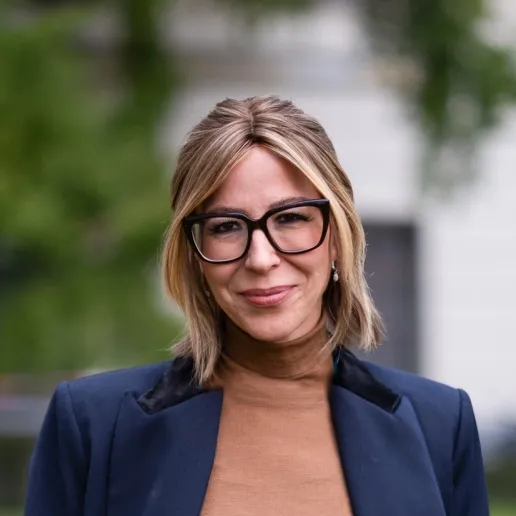EXC 2025: Matters of Activity. Image Space Material
Facts
Construction Engineering and Architecture
Art History, Music, Theatre and Media Studies
Materials Science
Literary Studies
Humanities and Social Sciences
DFG Excellence Strategy Cluster
Description
A ground-breaking event of the 21st century is and will be the re-invention of the analogue in the digital age. Its core is a new active materiality which is beginning to transform research and everyday life. In the future, techniques will no longer be based on the idea of passive tools and materials that need human- and machine-centred agency to make them move and work. Materials are now increasingly perceived as physical and symbolic agents. This challenges traditional concepts of image, space, and material, which are increasingly seen as interrelated, inseparable carriers and agents of information. The aim of the Cluster “Matters of Activity” is to provide the foundations for a new culture of active materiality, enabling the development of sustainable, energy-saving artefacts and techniques by focusing on their active spaces and symbolic forms. The inseparability of active images, spaces, and materials makes the endeavour inherently interdisciplinary, requiring historical analysis, experimental and design-oriented research, as well as the scrutiny of its practical and theoretical consequences. The humanities, natural sciences, engineering, and design disciplines will be equal partners. The Cluster also envisions a new role for “Gestaltung” in all disciplines as an integral part of materials development, given the increasing abundance of materials and visualisation tools available. Through exemplary research projects, the Cluster will systematically explore design strategies for materials and structures that are capable of adapting to specified challenges, investigate traditional processes (such as filtering, weaving, and cutting), and interrogate the confluence of dynamic visual representations, geometry, and symbolic forms within matter. The Cluster will establish an integrative and flexible infrastructure that builds on the legacies of previous design institutions including the 金贝棋牌 für Gestaltung Ulm and the Black Mountain College by focusing on making, thinking, and experimenting. Combining the legacies of the 200-year history of Humboldt-Universit?t zu Berlin and the 100-year history of the Bauhaus, the Cluster “Matters of Activity” will be a dynamic interdisciplinary laboratory. Advancing the existing Cluster “Image Knowledge Gestaltung”, where formats for interdisciplinary collaboration have already been established, it will be located in the Hermann von Helmholtz Centre for Cultural Techniques, an interdisciplinary faculty of HU Berlin. The Cluster will also expand academic research and teaching by using the open Humboldt-Labor as a new platform for interacting with the public in the Humboldt Forum. As a thriving creative centre with numerous research facilities, design academies, collections and museums, and an internationally acclaimed start-up and design scene, Berlin is an eminently suitable location for an endeavour of this kind.
Topics
Spokesperson
 Person
PersonProf. Dr. Claudia Mareis
- Kultur-, Sozial- und Bildungswissenschaftliche Fakult?t
- Institut für Kulturwissenschaft
- Person
Prof. Dr. phil. Wolfgang Sch?ffner
- Kultur-, Sozial- und Bildungswissenschaftliche Fakult?t
- Institut für Kulturwissenschaft
Participants
- Person
Prof. Dr. Horst Bredekamp
- Kultur-, Sozial- und Bildungswissenschaftliche Fakult?t
- Institut für Kunst- und Bildgeschichte
- Person
Dr. Sieck Jürgen
- University of Applied Sciences for Engineering and Economics
- Person
Prof. Dr. Dr. h.c. Peter Fratzl
- Max Planck Institute of Colloids and Interfaces
- Person
Prof. Dr. Claudia Müller-Birn
- Free University of Berlin
- Person
Prof. Dr. phil. Christian Kassung
- Kultur-, Sozial- und Bildungswissenschaftliche Fakult?t
- Institut für Kulturwissenschaft
- Person
Prof. Dr. Claudia Blümle
- Kultur-, Sozial- und Bildungswissenschaftliche Fakult?t
- Institut für Kunst- und Bildgeschichte
- Person
Sharon Macdonald
- Zentralinstitut Hermann von Helmholtz-Zentrum für Kulturtechnik
- Social Anthropology
- Person
Prof. Dr. Regine Hengge
- Lebenswissenschaftliche Fakult?t
- Institut für Biologie
- Person
Prof. Dr. phil. Joseph Vogl
- Sprach- und literaturwissenschaftliche Fakult?t
- Institut für deutsche Literatur
- Person
Prof. Dr. rer. nat. Jürgen P. Rabe
- Mathematisch-Naturwissenschaftliche Fakult?t
- Institut für Physik
- Person
Prof. Dr. Matthias Staudacher
- Mathematisch-Naturwissenschaftliche Fakult?t
- Institut für Mathematik
- Person
Prof. Dr. John Nyakatura
- Lebenswissenschaftliche Fakult?t
- Institut für Biologie
- Person
Prof. Dr. J?rg Niew?hner
- Director / Office
Organization entities
Department of Biology
Address
Institutsgeb?ude/Hauptgeb?ude, Invalidenstra?e 42 (Hauptgeb?ude), 10115 Berlin
More locationsDepartment of Cultural History and Theory
Address
Institutsgeb?ude, Georgenstra?e 47, 10117 BerlinHermann von Helmholtz-Centre for Cultural Techniques
Address
Langhans- + Gerlachbau, Tieranat. Theater (Haus 3), Philippstra?e 12 (Haus 3), 10115 Berlin
More locations
Partners
- Cooperation partnerUniversityGermany
Charité – Berlin University Medicine
- Cooperation partnerUniversityGermany
Free University of Berlin
- Cooperation partnerNon-university research institutionGermany
Max Planck Institute of Colloids and Interfaces
- Cooperation partnerFoundationGermany
Prussian Cultural Heritage Foundation
- Cooperation partnerUniversityGermany
Technical University of Berlin
- Cooperation partnerUniversityGermany
University of Applied Sciences for Engineering and Economics
- Cooperation partnerUniversityGermany
wei?ensee kunsthochschule berlin

